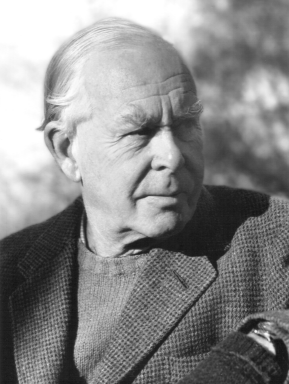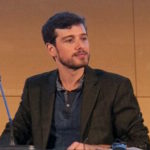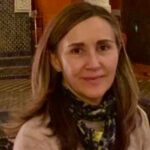Who we are
The International Attachment Network promotes the fundamental role of attachment theory in all aspects of human connection. We advocate and educate on its application for improved outcomes in the fields of psychological health, healthcare, social care, education, public policy and beyond. We do this by bringing together clinicians, researchers, academics and professionals in our series of events, seminars, training initiatives, research programs, publications and international network of IAN’s. Established in 1992 by close colleagues of John Bowlby the founder of attachment theory, the International Attachment Network is a membership based educational charity, led by experienced clinicians and academics in the field of attachment theory. Headquartered in the UK we have a growing active presence around the world.

Attachment Theory
The Foundations of Attachment Theory
John Bowlby (1907-1990) the founder of attachment theory, was a British psychoanalyst and child psychiatrist, working clinically not only with individuals in analysis, but also families and children. For Bowlby, the context in which the child develops is crucially important. The quality of the attachment bond established between the significant caretaker and child is a key factor in influencing mental health and determining emotional disturbance and psychopathology later in life. Open not only to psychoanalysis, but also to developmental psychology, evolutionary thinking, biology, ethology, cybernetics and information theory, Bowlby developed an understanding of attachment that in particular ways went beyond Freud´s original psychoanalytic theory. Bowlby worked in association with Mary Ainsworth’s (1913-1999) who studied attachment and child development in the context of naturalistic observations and laboratory experiments. Attachment theory is a basic framework for theoretical developments, clinical observations and empirical research.
Building Attachment: A Biological & Evolutionary Process
Our History
Established in 1992 by former colleagues of John Bowlby, the International Attachment Network (IAN) was founded with two aims that continue today:
- To embed and grow the clinician-researcher collaboration that characterised attachment theory
- To promote knowledge and understanding of attachment theory
Many of the leading thinkers in attachment theory came together as IAN to collaborate and propagate their research and ideas internationally, academically, politically and professionally. Early IAN speakers included international figures Allen Schore, Daniel Stern and Colwyn Tevarthen, and many others who traveled to present and discuss their now foundational ideas with the group.
Individually IAN’s founding membership led by Dr Mario Marrone (former Chair and current Executive Committee member) Dr Tirill Harris (former Chair) researched and published numerous ideas on attachment theory and its application, producing texts on neurobiology, psychoanalysis, trauma and violence, disabilities, neo-natal care, immigration, politics, the body, group and family therapy among many others.
Collectively, IAN deepened the academic profile, public policy role and international awareness of attachment theory.
IAN established the UK’s first dedicated course in attachment theory at University College London (UCL) and in 1999 IAN launched the first journal in attachment theory, its official journal, the Journal of Attachment and Human Development (Taylor Francis). It featured a notable editorial team of Mario Marrone, Howard Steele, John Bing-Hall, Tyrill Harris and Peter Fonagy. Today it remains a leading international authority on attachment theory and research and as well as the official journal of the International Attachment Network it is now also the official journal of the Society for Emotion and Attachment Studies (SEAS).
Promoting the vital place of attachment theory in public policy at home and in Europe, and continuing the work of John Bowlby in lobbying on child mental health, IAN represented by Chair Mario Marrone joined the European branch of the World Federation for Mental Health in Brussels as part of the programme ‘Mental health for Children aged 0-6 (1997-2000), in liaison with the European Union. In 2001, sponsored by the European Parliament IAN organised an international conference in Luxembourg where European clinicians and academics gathered to network and establish formal research and professional linkages. Today IAN remains proudly active at a European level, and is currently a research partner in an EU project to improve EU-wide family mental health.
From the outset IAN established a presence in Spain, the location of many of IAN’s conferences and where a group of IAN members established the Attachment and Human Development Laboratory (University of Girona). Spain remains a location for many IAN academic activities; in the more recent past, the International Attachment Network has launched a series of online courses on attachment theory, originally directed by Elsa Wolfberg, and attended by students from around the Spanish speaking world. IAN has developed a strong presence in Latin America and now has chapters in Argentina, Brazil, Chile, Colombia, Cuba, Ecuador, Guatemala, Panama, Paraguay and Mexico. With a focus on international expansion, IAN also has active chapters in China and Italy as well as representative presences in both the US and Canada.
Today at IAN through our program of training, events, research and collaboration, we continue the success of our founding team. Now a dominant theory of human development and pathology, we focus much of our work on promoting attachment theory beyond its existing applications, bringing together researchers, clinicians and professionals;
- Beyond geographical borders – our 2017 joint International Attachment Conference with SEAS in London attracted over 600 delegates from over 40 countries;
- Beyond the clinical environment – this year we educated OFSTED on the application of attachment theory to the treatment of children in care-homes;
- Beyond traditional psychotherapy – this year in Elche, Spain, we ran a successful workshop for psychological clinicians on trauma sensitive yoga;
- Beyond local issues – we remain proud to speak out on public policy, last year registering our protest at US immigration policy with a letter to the President of the United States.
To be a part of our proud legacy and to help us continue our work, join us here
Our Structure
The International Attachment Network (IAN) is an educational charity supported by membership fees, event sales, training fees, public donations and The Lady Balloch Psychotherapy Trust. It is led by a Board and an Executive Committee who meet regularly to oversee governance issues, and plan, approve and manage IAN activities and membership in accordance with IAN’s founding aims. The Executive Committee is staffed by nominated experienced clinicians, academics, researchers and professionals for whom attachment theory forms a significant part of their work.
IAN’s global structure consists of official ‘Chapters’. In officially applying to IAN UK to become part of the IAN network, the Chapters agree to advance the IAN founding aims and to follow the IAN guiding principles and regulations.
All International IAN’s are represented on the IAN International Liaison Committee. The role of the International Liaison Committee is to share and collaborate as well as coordinate IAN’s international growth and activities. If you are interested in establishing an International IAN you can find out more here.
Membership of any IAN is open to psychologists, psychotherapists, psychoanalysts, counsellors, psychiatrists, paediatricians, teachers, neuroscientists, social workers, dulas and researchers, who reside anywhere in the world, and for whom the Attachment Theory forms a significant part of their work. Among psychotherapists we have members who practice psychoanalytic therapy, group-analysis, psychodrama, systemic family therapy, multifamily (or interfamily therapy) and trauma sensitive yoga. In special cases, people who do not have a title may be eligible for membership if they are approved by a majority vote of the executive committee or Board of Directors.











